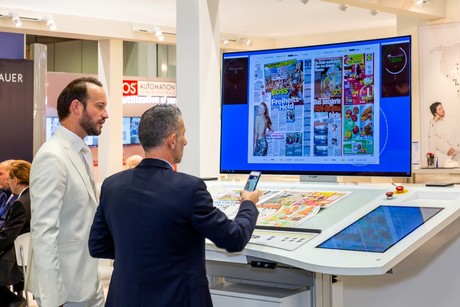On that day, the Globe and Mail relaunched its newspaper, website and other digital products, all with new designs, as well as launching some new niche print products. This date was circled on the calendar for nearly two years to coincide with the startup of new presses by its longtime printing partner, Transcontinental.
Since the launch, the newspaper has enjoyed 4.4 percent increase in circulation and attracted a significant number of new advertisers, especially to its new supplements that feature glossy covers and improved newsprint.
Indeed, Crawley is an ambassador for print and here he shares the company's product strategy and where semi-commercial printing might play a more significant role in the future.
WAN-IFRA: How did you go about canvassing the market for the new design of your products (also semi-commercial) and how much of a role do you think the look and feel of your redesigned (and new) products played in reader and advertiser acceptance?
CRAWLEY: Before we relaunched the paper (and our websites) on October 1, we had spent more than two years preparing the market for the changes to come. Between January and September 2010, our advertising staff made 1000 presentations to advertisers and their agencies showing them mock-up pages and explaining the changes we planned, which included a smaller page… two inches shorter in depth, reduced to 21 inches. For our biggest customers, and especially the heads of the big agencies based in Toronto, we organized two-hour presentations in which the Editor-in-Chief, the VP of Advertising, and myself all talked about the significance of the changes… we did about 20 of them before launch to make sure we had commitments in place to buy space in the new paper, focusing in particular on the new options created by being able to run glossy stock mixed with ordinary newsprint, a concept that was new to this market, and which has proved to be very popular.
We also did extensive market research in the year leading up to the relaunch to assess reader reaction to the proposed changes. We held three waves of focus group research with carefully chosen demographics to test out design and content options, as well as the smaller format and the glossy stock. The mock-up pages were shown to readers and non-readers in several different cities.
The glossy stock has been a big hit. As I said in Mainz (at the WAN-IFRA Printing Summit), advertiser demand for the glossy sections has been very strong, with new advertisers from the magazine industry booking long-term commitments with the Globe to guarantee prime positions. The reaction from readers is that they wish we could run more glossy stock, less ordinary newsprint.
WAN-IFRA: How much potential do you see for more semi-commercial products and production in your market?
CRAWLEY: We are only now, after six months of running the new KBA presses, beginning to exploit the potential for commercial offshoots in terms of customized products, and we expect this to be one of our best areas for new revenue growth in the next fiscal year beginning September 1.
Our early attempts have been encouraging. We produced a magazine co-branded with one of the largest hospitals in Toronto, which they mailed out to their donor base. They provided the raw material for the content… stories about research and new treatments… and our staff organized the writing, layout, design and production, with our advertising sales staff collecting the revenue from selling space. The hospital was delighted with the improved quality compared to their previous publications, and we launched a new revenue stream.
Once our printer, Transcontinental, accepts the presses from KBA, we expect to produce more such publications, tailored to the needs of our partners.
WAN-IFRA: Since the Globe and Mail outsourced its production to Transcontinental, what have been the direct benefits of doing so? And what have been the challenges of this decentralised strategy?
CRAWLEY: The benefits to The Globe and Mail of outsourcing print capacity have been clear for the last 15 years… no heavy capital investment, no annual depreciation costs on the balance sheet, and access to new technology expertise in printing from Canada’s largest commercial printer. It is a partnership based on a high level of trust, and a shared sense of the value of print. Transcontinental were very helpful to me when we first started discussing print options three years ago….they showed me what the new hybrid presses would be able to offer long before that became known in Canada, so The Globe was able to steal a march on its rivals, and hit the market with a big competitive advantage.
The challenges are in ensuring daily quality standards are being met in six plants scattered across the country. We monitor the results daily but we are not yet satisfied with the consistency of the copies.
WAN-IFRA: Some newspapers try all kinds of special advertising formats (like half cover, gate fold cover, transparent paper, 3D and even speaking ads) offering their advertising clients a variety of new possibilities to catch the readers attention. Is this a promising strategy? What do you offer in this area and how successful have you been with special ad formats?
CRAWLEY: We are trying out some of the new concepts, like French doors (gatefolds), and wraps on certain sections. We have not yet run half-wraps (vertical half-page on the front of four pages) on glossy stock yet, but that is our hope. We were running some of these formats on the old presses, but we have held off until the presses are fully settled.




